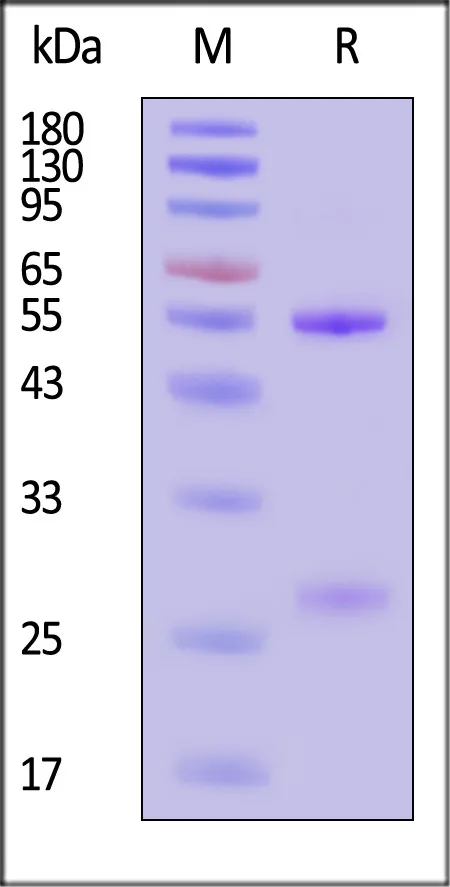Monoclonal Anti-Nipah Post Fusion glycoprotein Antibody, Human IgG1 (3C3)
CAT:
716-NIN-M760-100ug
Size:
100 µg
Price:
Ask
- Availability: 24/48H Stock Items & 2 to 6 Weeks non Stock Items.
- Dry Ice Shipment: No






Monoclonal Anti-Nipah Post Fusion glycoprotein Antibody, Human IgG1 (3C3)
- Background: Hendra virus (HeV) and Nipah virus (NiV) are henipaviruses discovered in the mid-to late 1990s that possess a broad host tropism and are known to cause severe and often fatal disease in both humans and animals. HeV and NiV infect host cells through the coordinated efforts of two envelope glycoproteins. The G glycoprotein attaches to cell receptors, triggering the fusion (F) glycoprotein to execute membrane fusion. G is a type II homotetrameric transmembrane protein responsible for binding to ephrinB2 or ephrinB3 (ephrinB2/B3) receptors. F is a homotrimeric type I transmembrane protein that is synthesized as a premature F0 precursor and cleaved by cathepsin L during endocytic recycling to yield the mature, disulfide-linked, F1 and F2 subunits. Upon binding to ephrinB2/B3, NiV G undergoes conformational changes leading to F triggering and insertion of the F hydrophobic fusion peptide into the target membrane. Subsequent refolding into the more stable post-fusion F conformation drives merger of the viral and host membranes to form a pore for genome delivery to the cell cytoplasm.
- Description: Hendra virus (HeV) and Nipah virus (NiV) are henipaviruses discovered in the mid-to late 1990s that possess a broad host tropism and are known to cause severe and often fatal disease in both humans and animals. HeV and NiV infect host cells through the coordinated efforts of two envelope glycoproteins. The G glycoprotein attaches to cell receptors, triggering the fusion (F) glycoprotein to execute membrane fusion. G is a type II homotetrameric transmembrane protein responsible for binding to ephrinB2 or ephrinB3 (ephrinB2/B3) receptors. F is a homotrimeric type I transmembrane protein that is synthesized as a premature F0 precursor and cleaved by cathepsin L during endocytic recycling to yield the mature, disulfide-linked, F1 and F2 subunits. Upon binding to ephrinB2/B3, NiV G undergoes conformational changes leading to F triggering and insertion of the F hydrophobic fusion peptide into the target membrane. Subsequent refolding into the more stable post-fusion F conformation drives merger of the viral and host membranes to form a pore for genome delivery to the cell cytoplasm.
- CAS Number: 9007-83-4
- Host: HEK 293
- Origin Species: Human
- Target: Postfusion glycoprotein F0/post-F protein (NiV)
- Conjugation: Unconjugated
- Tag: Human IgG1 | Human Kappa
- Stability: -20°C to -70°C for 12 months in lyophilized state; -70°C for 3 months under sterile conditions after reconstitution._x000D_For long term storage, the product should be stored at lyophilized state at -20°C or lower._x000D_Please avoid repeated freeze-thaw cycles.
- Purity: 95%
- Bioactivity: Immobilized Nipah virus Post-Fusion glycoprotein, His Tag (Cat. No. PON-V52H3) at 1 μg/mL (100 μL/well) can bind Monoclonal Anti-Nipah Post Fusion glycoprotein Antibody, Human IgG1 (3C3) (Cat. No. NIN-M760) with a linear range of 0.03-1 ng/mL (QC tested).
- Format: Powder
- Buffer: PBS, pH7.4
- Additives: Trehalose
- Shipping Conditions: Room Temperature
- Storage Conditions: -20°C
